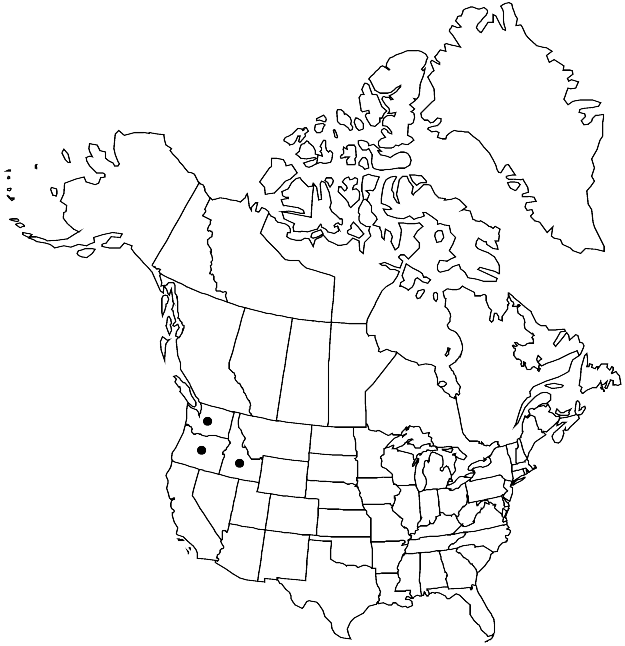Physaria oregona
Proc. Amer. Acad. Arts 17: 363. 1882.
Perennials; caudex simple, (cespitose); (silvery) pubescent throughout, trichomes (stalked), few-rayed, rays furcate or imperfectly so, (tuberculate throughout). Stems several from base, erect or somewhat decumbent, (unbranched), 1–3.5 dm. Basal leaves: (petiole slender, usually incised or with broad teeth along petiole); blade obovate, 4–6 cm, margins entire. Cauline leaves: blade oblanceolate or broader, 1.5–2.5 cm, margins entire or sparsely dentate, (apex acute). Racemes somewhat loose, (5–15 cm). Fruiting pedicels (spreading or ascending, curved, fruits not pendent), 10–20 mm. Flowers: sepals oblong, 5–7 mm; petals (lemon yellow), spatulate, 9–12 mm. Fruits didymous, obreniform, moderately inflated, angustispetate, (8–)10–12(–15) × 10–14(–16) mm, (papery, not keeled, basal sinus absent, apical sinus broad and open); valves (retaining seeds after dehiscence, rounded or irregular), loosely pubescent, trichomes spreading; replum broadly lanceolate, as wide as or wider than fruit, apex acute; ovules 8 per ovary; style 1–2 mm. Seeds flattened. 2n = 8.
Phenology: Flowering Apr–Jun.
Habitat: Gravelly banks, stream shores, rocky slopes, dry hillsides, serpentine soils
Elevation: 900-1900 m
Distribution

Idaho, Oreg., Wash.
Discussion
Selected References
None.